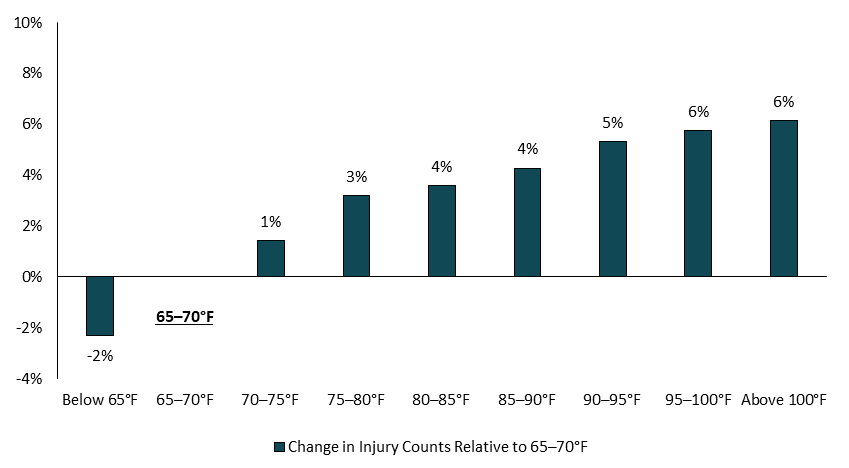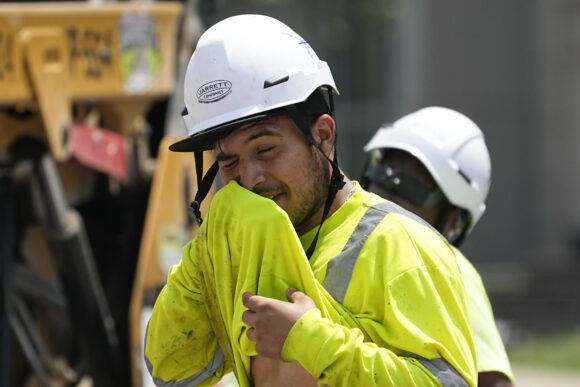With temperatures pushing above 90 degrees in parts of the Midwest and Northeast United States this week, many American workers are clocking in during what AccuWeather described as an “intense heat wave that is impacting more than 135 million people.”
When it heats up, workers can adapt. Employers adopt safety measures to protect employees from both the direct and indirect effects of extreme heat, and both state and federal governments offer recommendations for how to deal with scorching conditions.
“However, there are still concerns that these adaptations, behavioral changes and recommendations may not fully reduce the effects of excessive heat,” Sebastian Negrusa, the Workers Compensation Research Institute’s chief research scientist, said during a recent heat-related webinar.
Excessive Heat Increases Frequency of Work-Related Injuries
In a new study, WCRI found that compared to temperatures between 65 and 70 degrees, the overall number of work-related injuries increased between 5% and 6% when the daily maximum temperature rose above 90 degrees.

This finding was based on National Oceanic and Atmospheric Administration temperature data from 24 states during the months of May to October through the years of 2016 to 2021. That information was then merged with workers’ compensation claims data.
The direct effects of excessive heat are physiological; they include heatstroke, fainting, cramps and fatigue. Indirect effects of extreme heat manifest as a decline in psychomotor, perceptual or cognitive tasks, which could, for example, cause a worker to fall off a ladder.
Excessive Heat Becoming More Common
According to the CDC, between 1981 and 2021, the annual number of excessive heat days from May through September has become more frequent in parts of the South, Midwest and Northeast.
When analyzing their sample, WCRI researchers found that the South is the region driving the work-related injury count increase, with increases of between 9% and 11% when temperatures exceed 90 degrees. That increase was 8% in the Northeast.
Traumatic injuries, such as fractures, contusions and lacerations, are “much more likely to occur when workers experience excessive heat than [sprains] and strains,” Negrusa said. These traumatic injuries are consistent with events like ladder falls.
The full study can be accessed on the WCRI website.
Excessive Heat Expected to Break Soon
More days of 90-plus-degree weather are expected from Illinois to Maine. AccuWeather reported Wednesday that Washington, D.C., is forecast to hit triple-digits on Sunday — setting the daily record and marking the first time the nation’s capital passed 100 degrees in nearly eight years.
A cold front is expected to move into the Ohio Valley and Northeast late this weekend and early next week, though, bringing “slightly cooler conditions and lower humidity levels,” AccuWeather reported.
Was this article valuable?
Here are more articles you may enjoy.


 Asahi Sales Drop Worsens as Cyber Hack Disruption Lingers
Asahi Sales Drop Worsens as Cyber Hack Disruption Lingers  California Again Delays Wildfire Protection Rules for Homes
California Again Delays Wildfire Protection Rules for Homes  Abbott Presses Congress for Shield Over Preemie Baby Formula Litigation That Could Cost It Billions
Abbott Presses Congress for Shield Over Preemie Baby Formula Litigation That Could Cost It Billions  Truckers Who Fail English Tests Get Pulled Off Roads in Trump Crackdown
Truckers Who Fail English Tests Get Pulled Off Roads in Trump Crackdown 